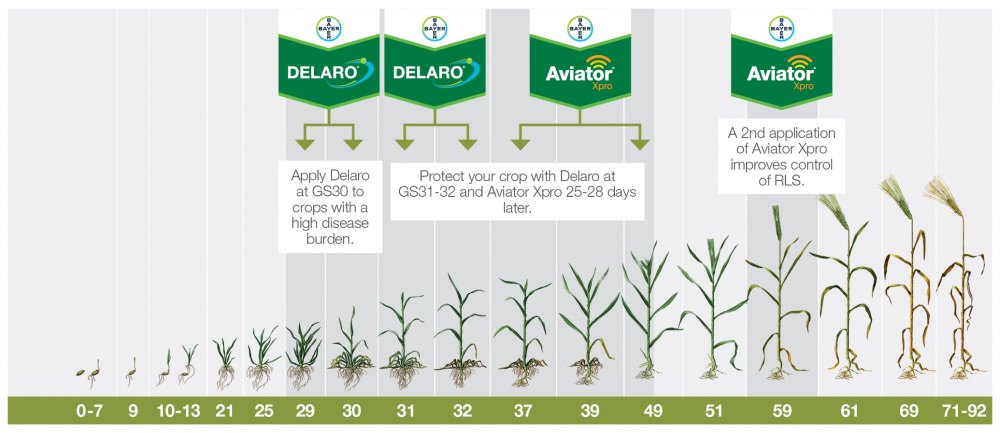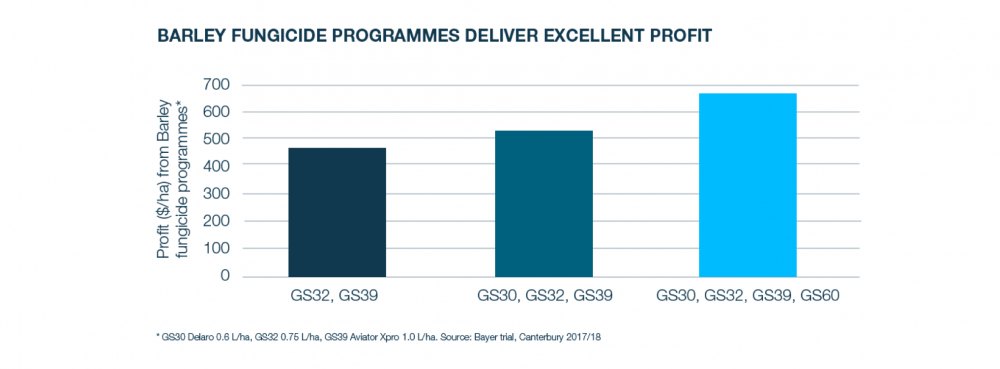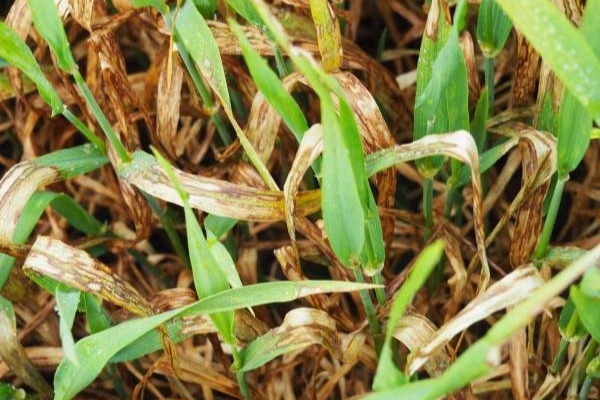Coming soon - a critical time for barley disease control
Threats in the Field
Throughout NZ, scald and leaf rust have heavily infected barley crops as a result of the mild, wet winter. No doubt, early-season fungicides applied at GS30 and GS32 will be controlling these diseases. Nevertheless, this does not mean you can let your guard down. With high levels of inoculum ready and waiting to attack in the bottom of the crop canopy, a follow-up GS39 fungicide will be essential.
In addition, the threat of Ramularia leaf spot (RLS) makes this application even more important. At the moment RLS cannot be easily seen on the crop. This, however, does not indicate a disease-free crop, as the disease grows inside the plant having first infected it via the seed.
True, you might be able to find a few RLS lesions on the dying older leaves, but the first real signs RLS has infected your crop won’t become visible until late November. At this point, RLS causes rapid death of the upper leaves leading to premature crop death and reduced yields. By then, it is simply too late to take action.
In addition, the threat of Ramularia leaf spot (RLS) makes this application even more important. At the moment RLS cannot be easily seen on the crop. This, however, does not indicate a disease-free crop, as the disease grows inside the plant having first infected it via the seed.
True, you might be able to find a few RLS lesions on the dying older leaves, but the first real signs RLS has infected your crop won’t become visible until late November. At this point, RLS causes rapid death of the upper leaves leading to premature crop death and reduced yields. By then, it is simply too late to take action.
Take Control of Your Crops
To control RLS, it is vital that Aviator® Xpro is applied between GS39 and GS49 (flag leaf emerged to awns emerging). During Bayer trials carried out in Canterbury, the best control of RLS resulted from a GS39 application.
What’s more, applying Aviator® Xpro between GS39-49 (as is seen in the Barley Spray Programme below) will also control scald, net blotch and leaf rust that would otherwise infect the crop.
What’s more, applying Aviator® Xpro between GS39-49 (as is seen in the Barley Spray Programme below) will also control scald, net blotch and leaf rust that would otherwise infect the crop.
From the crops inspected to produce this Disease watch, we found that for most autumn/winter planted barley crops, GS39-49 is now!

The Economics of Barley Fungicides
From Bayer’s New Zealand-based trials, it was found that a standard barley fungicide programme of GS32 followed by GS39 applications is very profitable. That said, these trials showed there is much more to this story. They demonstrated that incorporating a GS30 application alongside a GS59 application further increased the overall profit to growers.

What about the insensitivity of Ramularia Leaf Spot to SDHI fungicides and their use in barley?
Bayer is closely cooperating in the study of SDHI fungicide activity (such as Aviator® Xpro) against RLS. By conducting multiple trials, we are investigating this throughout NZ this spring.
Despite a number of RLS isolates having been found in 2017 with reduced sensitivity to all SDHI fungicides, it would be premature to draw conclusions on how this will translate into field performance.
We can confirm, however, that Aviator® Xpro gave very good disease control in 2017, providing profitable responses when used in barley. When you consider that Aviator® Xpro controls not only RLS, but also all other key barley diseases, it isn’t surprising that fungicide programmes incorporating Aviator® Xpro keep the crop clean, green and healthy for longer.
The good news? This success seems to be continuing in 2018. At Aorangi, our barley trial is already very forward and is at full ear emergence, clearly demonstrating that two applications of Aviator® Xpro provide excellent disease control. (See first two images below)
Despite a number of RLS isolates having been found in 2017 with reduced sensitivity to all SDHI fungicides, it would be premature to draw conclusions on how this will translate into field performance.
We can confirm, however, that Aviator® Xpro gave very good disease control in 2017, providing profitable responses when used in barley. When you consider that Aviator® Xpro controls not only RLS, but also all other key barley diseases, it isn’t surprising that fungicide programmes incorporating Aviator® Xpro keep the crop clean, green and healthy for longer.
The good news? This success seems to be continuing in 2018. At Aorangi, our barley trial is already very forward and is at full ear emergence, clearly demonstrating that two applications of Aviator® Xpro provide excellent disease control. (See first two images below)

Scald seen in the untreated plots of the Bayer barley fungicide trial, Aorangi





